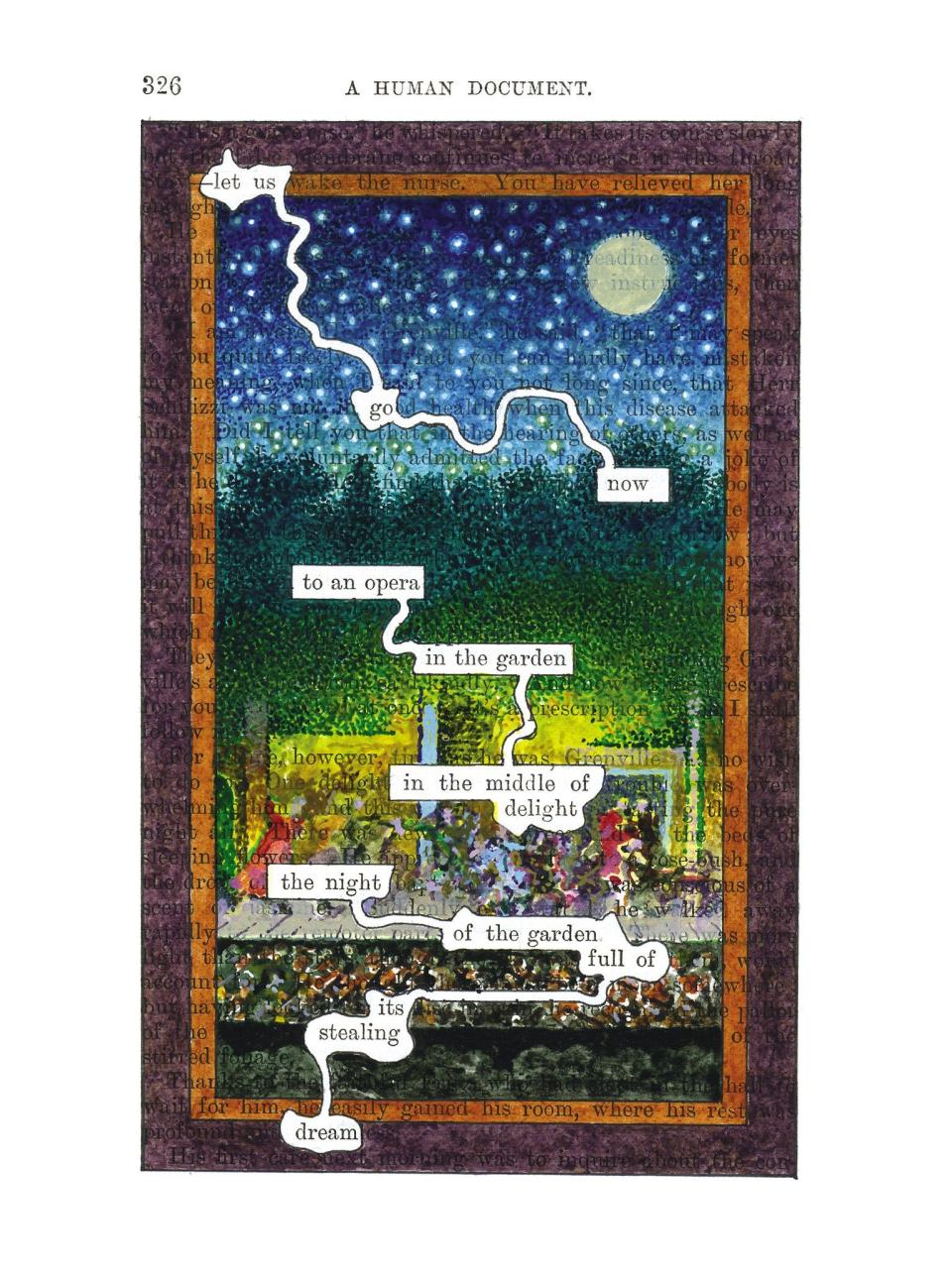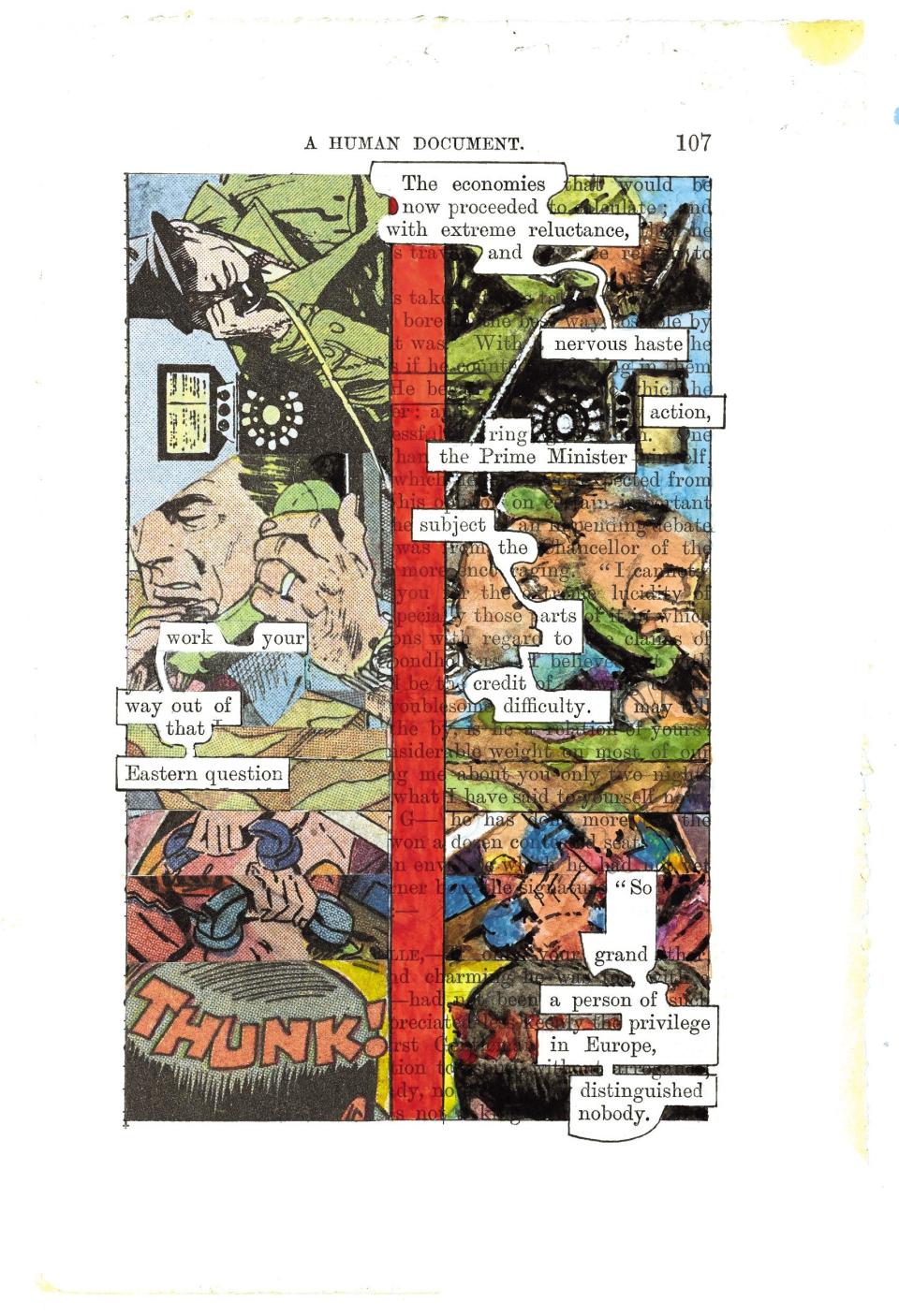Tom Phillips, British artist and polymath who playfully painted over the pages of a Victorian novel – obituary

Tom Phillips, who has died aged 85, owned more than a dozen identities, including essayist, composer, poet, art historian, translator, film-maker, fiction writer, Royal Academy curator and collector; he became best-known, however as an artist.
Even in this sphere, Phillips’s output was extraordinarily varied, ranging from the figurative through the abstract to the conceptual, making him impossible to pigeon-hole. Yet in 1989 he became only the second living artist to have a one-man show at the National Portrait Gallery; his subjects included Salman Rushdie, Harrison Birtwistle, Peter Hall, Iris Murdoch and the Monty Python team.
His other works included collages, theatre sets, sculpture, mud paintings, patchwork quilts (including one constructed out of prostitutes’ calling cards) – and a series of orange-peel collages on the subject of “serial castrator” Clementine Seville, the “Peckham Peeler”.
As chairman of exhibitions at the Royal Academy, Phillips curated a major exhibition of African art (of which he himself was a collector) in 1995 which toured Berlin and New York. In 1997 he played the leading role in bringing “Sensation”, an exhibition of works from the Charles Saatchi collection, to Burlington House, prompting such an outcry that three academicians resigned over the display of Marcus Harvey’s portrait of Myra Hindley, made of children’s handprints.
His most significant work was A Humument: a Treated Victorian Novel, on which he embarked as a project in the 1960s after randomly buying A Human Document by the Victorian author WH Mallock in a second-hand bookshop. He began creating art from its pages, painting, making collages or drawing over the print, leaving some of the text peeping through in bubble shapes, creating a story different from the original and adding new characters such as his hero and alter ego “Bill Toge”, whose surname only appears on pages which originally contained words like “together” or “altogether”.

Several editions of A Humument were published over 30 years, with more and more pages being revised each time and old pages reworked.
While no one questioned Phillips’s creative genius, some critics found this and similar art works too cerebral – “verbal diarrhoea given pictorial expression”, as one put it.
But to those looking for links in Phillips’s work, A Humument was full of tantalising references to events in his own life, and to his other interests – artistic, musical and literary. One of his characters, Irma, became the subject of an experimental opera written in 1969. “It does contain, in some reflected sense, everything I’ve done,” Phillips explained.
Trevor Thomas Phillips was born in south London on May 24 1937 to a Welsh father and Cockney mother who ran a boarding house to supplement her husband’s unreliable income from speculating in cotton futures.
He was educated at Henry Thornton Grammar School, Clapham, where he played violin and bassoon in the school orchestra and sang solo baritone in school concerts. In 1954 he exhibited at an open art show on the railings of the Thames Embankment. A year later, aged 17, he won a travelling scholarship to France. On his return he bought himself a piano and taught himself to play. In 1957 he became a founder member of the Philharmonia Chorus.
From 1958 to 1960 Phillips read English Literature and Anglo Saxon at St Catherine’s College, Oxford. He attended life drawing classes at the Ruskin School, acted in plays and designed and illustrated Isis magazine.
After graduating he taught for a time at a secondary school in Brixton, which he hated, meanwhile attending evening classes in life drawing (under Frank Auerbach), and sculpture at Camberwell College of Arts, where he became a full-time student in 1961.

When he graduated in 1964 his work was selected for that year’s Young Contemporaries Exhibition in London and in the following year the AIA Galleries in London exhibited his first one-man show.
Phillips became a teacher at Ipswich School of Art, where one of his students was Brian Eno, who would become a lifelong friend. He soon moved to teaching Liberal Studies at Walthamstow Polytechnic where he met John Tilbury, the pianist, for whom he wrote his first musical compositions.
In 1966 Phillips exhibited in the Royal Academy Summer Exhibition for the first time, and started work on A Humument. In 1968 he moved to Wolverhampton School of Art, and had a second one-man exhibition, in Birmingham.
Throughout the 1970s his works were exhibited widely. After a period as a visiting tutor at the Art School in Kassel, Germany, he abandoned teaching and took the first of several trips to Africa, which became a lifelong passion. His first significant publication, Works and Texts I, was published in 1975. The following year saw the completion of the privately printed edition of A Humument.
From the late 1970s, Phillips began contributing regular reviews to the Times Literary Supplement and other papers. In the 1980s he designed a series of tapestries for his old Oxford college and embarked on portraiture with a portrait of his friend, the bookbinder Pella Erskine-Tulloch. In 1983 a private limited edition of his translation of Dante’s Inferno, illustrated by the translator, won the V&A’s Francis Williams Book Design Prize. A television adaptation of the Inferno, co-directed with Peter Greenaway, was broadcast in 1990 and won first prize at the Montreal Festival and the Prix Italia. In 1989 he was elected a Royal Academician.

In the 1990s Phillips produced a glass screen and paintings for the Ivy Restaurant in London, illustrated Plato’s Symposium and Beckett’s Waiting for Godot for the Folio Society and had a new Works and Texts book published. In 1994 he published Merely Connect: A Questschrift for Salman Rushdie, marking the fifth year of the fatwa and conceived during a series of portrait sittings.
As the decade progressed he moved into new areas such as stage design, quilting, mud drawing and wire sculptures. He designed an ENO production of Otello (also translating the libretto), and in 1997 designed the sets for A Winter’s Tale at the Globe theatre. In 1998 Largo Records released Six of Hearts, a CD of texts from A Humument set for soprano, and ensemble songs and other music written in the 1990s.
In 2000 Phillips’s passion for ephemera yielded The Postcard Century, an encyclopaedic and evocative portrait of the 20th century through 2,000 postcards and their messages a year by year. The same year he designed lampposts, pavements, gates and arches for Southwark Council’s Peckham Renewal Project. In 2003 he designed a Royal Mint commemorative five-pound coin for the 50th anniversary of the Coronation and two years later he wrote the libretto for Heart of Darkness, a chamber opera with music by Tarik O’Regan.
Phillips’s other “ongoing” projects included 20 Sites ’n’ Years, a series of photographs of the same 20 spots in his studio’s south London neighbourhood taken once every year, and Terminal Greys, a series of paintings consisting of cross-hatched bars from the leftovers on his palette at the end of each working day.
He provided cover art for rock albums including Starless and Bible Black by King Crimson (1974), Another Green World by Brian Eno (1975) and Dark Star’s Twenty Twenty Sound (1999. He also produced books about art including Music In Art (1997) and Africa: The Art of a Continent (1999).
Phillips was a man of almost Kantian rigid habits. He continued to live in his mother’s house in Peckham, would rise at 7am every day, eat the same breakfast (toast, marmalade, coffee), have lunch at the same café and work in his studio from 9.30 to 1pm, from three to 5.30pm, then from 8.30 pm to about 12.30 am.
As well as his role at the Royal Academy, Phillips served as a trustee of the National Portrait Gallery and of the British Museum. He was appointed CBE in 2002.
Tom Phillips married first, in 1961 (dissolved 1988), Jill Purdy, with whom he had a son and a daughter, and secondly, in 1995, the writer Fiona Maddocks, now the music critic of The Observer.
She survives him with his children.
Tom Phillips, born May 24 1937, died November 28 2022

 Yahoo Movies
Yahoo Movies 